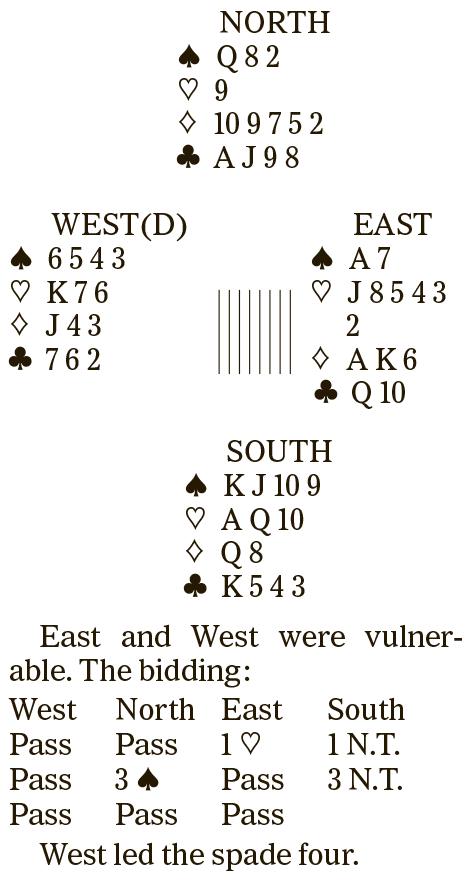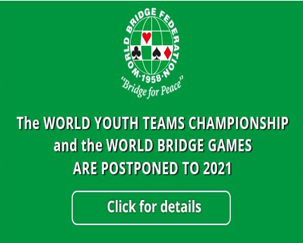 Although the USA-1 youngsters team lost, perhaps the best declarer play of the match was found by South in the diagramed deal from the penultimate session. At the other table, East opened one heart, and South overcalled one no-trump, which was passed out. After a heart lead, declarer, playing safely for his contract, dropped the club queen to take three spades, two hearts and four clubs for plus 150.
Although the USA-1 youngsters team lost, perhaps the best declarer play of the match was found by South in the diagramed deal from the penultimate session. At the other table, East opened one heart, and South overcalled one no-trump, which was passed out. After a heart lead, declarer, playing safely for his contract, dropped the club queen to take three spades, two hearts and four clubs for plus 150.
In the given auction, after South overcalled one no-trump, North decided, probably based on the state of the match, to force to game. His jump to three spades showed 3-1-4-5 or 3-1-5-4 distribution. South rebid three no-trump.
West led the spade four, third-highest from an even number or lowest from an odd number. East won with his ace and returned the suit to South’s king. What did declarer do next?

Notice the drawback of not specifying suit quality with a spot-card lead. A top-of-nothing six might have steered East in the right direction.
South could see that if West had the club queen and East the heart king, there would be no problems. But just in case the lie of the cards was less favorable, declarer found a truly imaginative play. He led from his hand the diamond queen and it went four … deuce … six.
Now South led another diamond. East won and shifted to a heart, declarer’s queen losing to West’s king. South took the heart return, played a spade to dummy’s queen and established the diamond suit, while the club ace was still a dummy entry. South lost only one spade, one heart and two diamonds, scoring plus 400.
USA-1 gained 6 imps for that great play, but lost the war.




























